A very large eruption occurred at Hunga Tonga-Hunga Haapai volcano in Tonga at around 13:15 on January 15, 2022 (around 04:15 on the same day in UTC). A tsunami warning was announced in Japan as well, and tsunamis exceeding 1m were observed.
We used seismograph, barometer, and ocean bottom pressure gauge data to analyze tsunami and volcanic shock waves. As a result, it was found that the tsunami propagated concentrically from Tonga, and its velocity was almost the same as the speed of sound.
In addition, a long-period (50 minutes) pulse was recorded in the barometer record, and it was found that this pulse also propagated concentrically at the speed of sound.
Assuming that the tsunami is due to changes in sea level due to the collapse of the volcanic mountain body, the speed of the tsunami is slower than the speed of sound on average, so we cannot explain the observed value of this tsunami arrival time.
From this, it is considered that the extremely strong shock wave generated by the eruption of the volcano became an atmospheric Lamb wave and propagated on the earth's surface, and the change in atmospheric pressure caused by this shock wave changed the sea level and excited the tsunami.
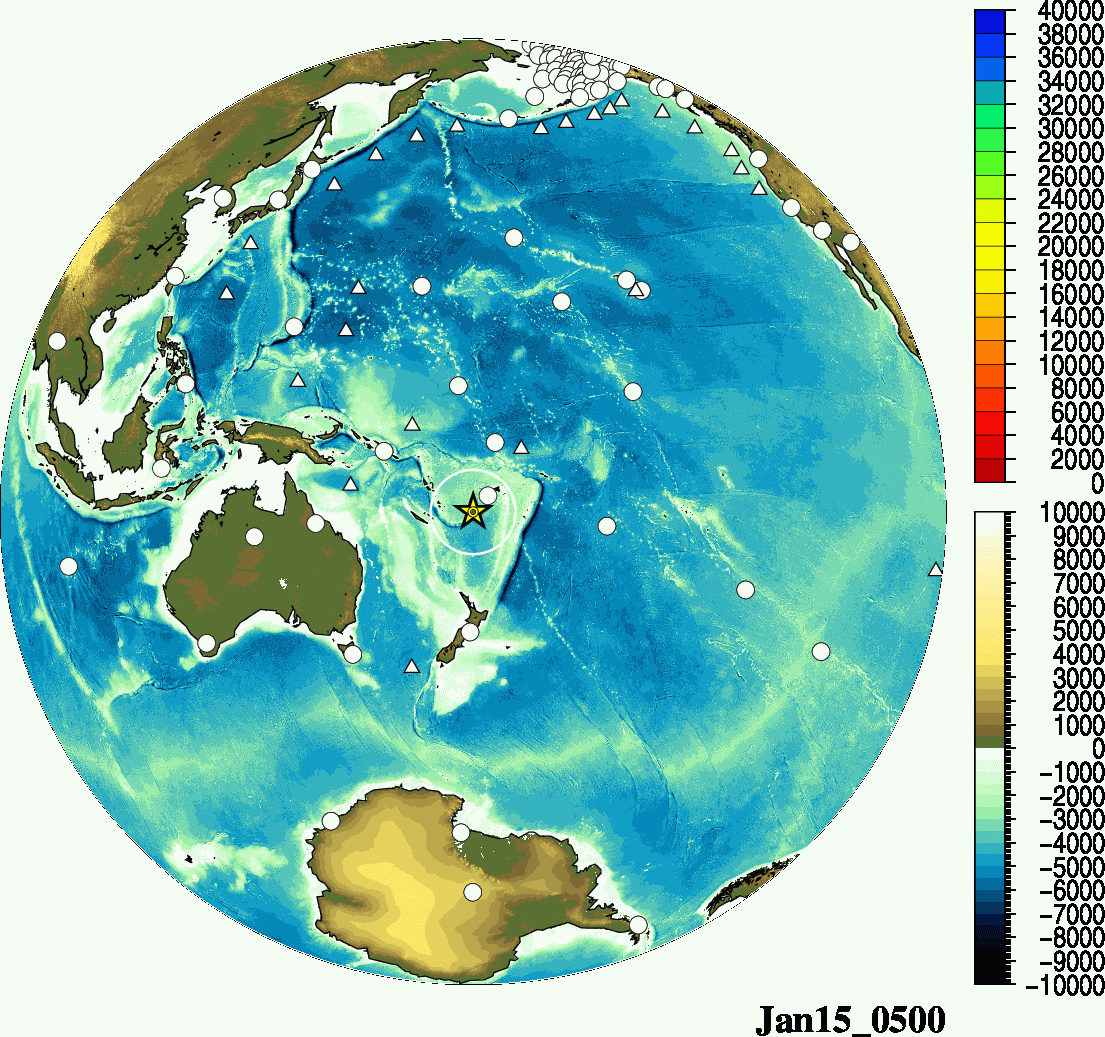
Figure 1 Plot of the arrival time of the tsunami (marked with △) and the arrival time of the pulse recorded on the barometer (marked with ○). The white circles generally depict the wavefront of sound waves (v = 0.3km / s). The number in the lower right is UTC time (Japanese time-9 hours).
Fig1. Tunami arrival (triangle) and shock wave arrival (circle).
Fig1. Tunami arrival (triangle) and shock wave arrival (circle).
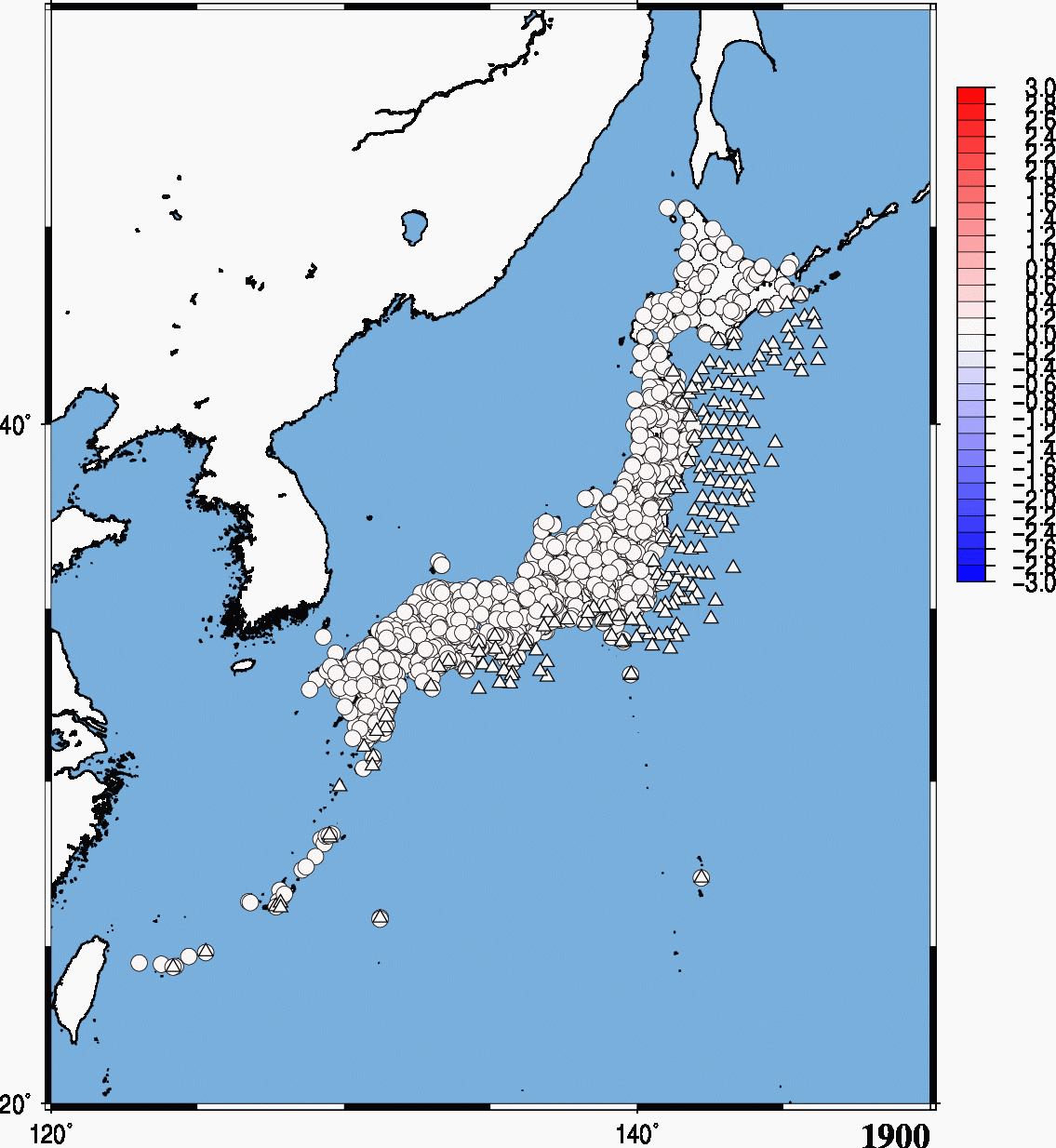
Figure 2 A plot of the arrival time of the tsunami (△ mark), the atmospheric pressure of the Japan Meteorological Agency Amedas, and the atmospheric pressure of Weathernews (difference from 19:00, hPa) near Japan. The number on the lower right is Japanese time.
Fig2. Tunami arrival (triangle) and pressure change (circle) around Japan.

Fig. 3 The maximum amplitude arrival time of a large pulse with a period of 3000 seconds (50 minutes) and the waveform recording of the barometer are arranged in order of distance from Tonga. Due to the influence of the westerlies, the observation point on the east side is reached a little earlier.
Fig3. Shock wave arrival and pressure waveforms.
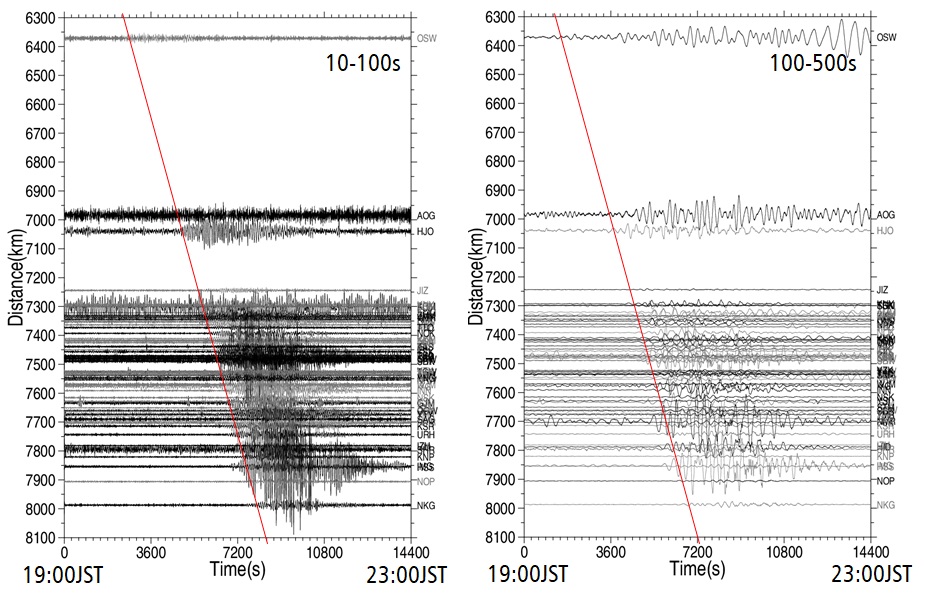
Fig. 4 Waveforms of the north-south component of F-net arranged according to the distance from Tonga. The propagation velocity is almost the same as the speed of sound. The arrival time is earlier for the long-period component.
Fig4. NS component of the F-net stations.
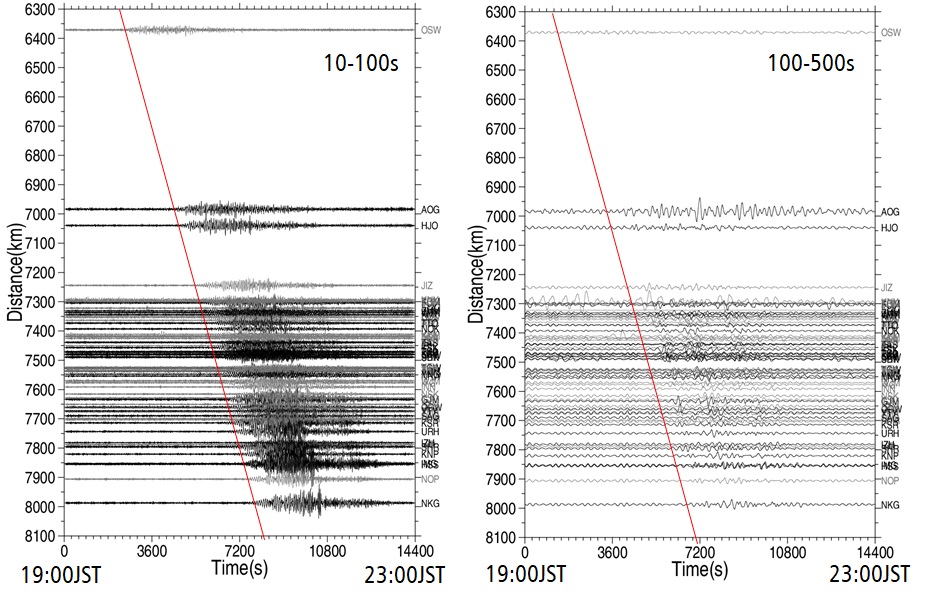
Fig. 5 Waveforms of F-net upper and lower components arranged according to the distance from Tonga. The propagation velocity is almost the same as the speed of sound. Compared to the horizontal component, the long-period amplitude of the upper and lower components is extremely small.
Fig5. UD component of the F-net stations.

Fig. 6 Waveform of NOAA submarine tsunami meter arranged according to the distance from Tonga. The propagation velocity is almost the same as the speed of sound.
Fig6. Tsunami waveforms recorded by NOAA.
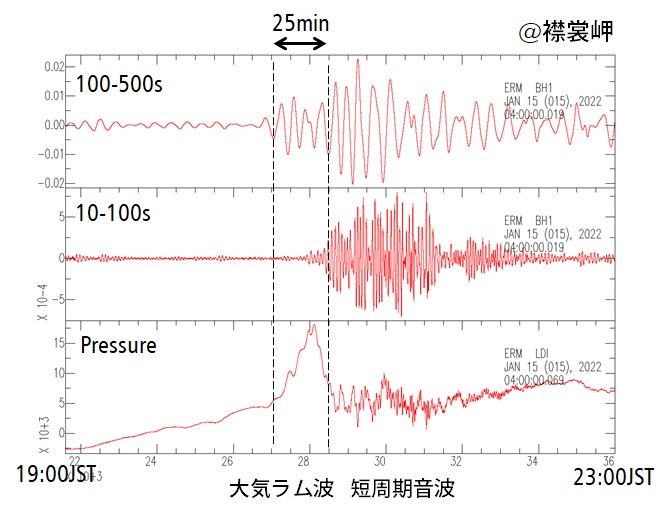
Figure 7 Waveform of Cape Erimo recorded by the IRIS observation network. Top: Horizontal component seismic motion with a period of 100-500 seconds, Medium: Horizontal component seismic motion with a period of 10-100 seconds, Bottom: Pressure waveform. A large pulse of about 25 minutes is recorded in the barometer, and it is considered that this atmospheric Lamb wave excited the tsunami.
Fig7. Seismic waveforms and pressure data in Erimo, Japan, recorded by IRIS.
References:
•Japan Meteorological Agency: About the tide level change due to the large-scale eruption of Hunga Tonga-Hunga Haapai volcano near the Tonga Islands around 13:00 on January 15, 13:00 https://www.jma.go.jp/jma/press/2201/16a/kaisetsu202201160200.pdf
• Japan Meteorological Agency: About the tide level change due to the large-scale eruption of Hunga Tonga-Hunga Haapai volcano near the Tonga Islands around 13:00 on January 15, 1945 (2nd report) https://www.jma.go.jp/jma/press/2201/16b/kaisetsu202201161415.pdf
• Earthquake Research Institute, The University of Tokyo: [Research Bulletin] Eruption of Hunga Tonga-Hunga Haapai Volcano around 13:00 (Japan time) on January 15, 2022 https://www.eri.u-tokyo.ac.jp/news/15712/
• National Research Institute for Earth Science and Disaster Prevention: Water pressure fluctuations observed by the National Research Institute for Earth Science and Disaster Prevention's marine observation network (S-net, DONET) due to a large eruption near the Tonga Islands https://quaketm.bosai.go.jp/news/20220115/
Acknowledgments:
In this research, we have used data from S-net, F-net, DONET data of Disaster Prevention Science and Technology Research Institute, tsunami inspection record and AMeDAS data of Meteorological Agency, pressure data of Weathernews meteorological observation machine "Soratena (ソラテナ)", pressure data of IRIS. In addition, we used NOAA ocean bottom pressure gauge data, data from Kochi Institute of Technology's infrastructure sound observation network, and seismic observation records from the Kansai Seismic Observation Research Council. We would like to express our sincere gratitude to all parties who supported us.